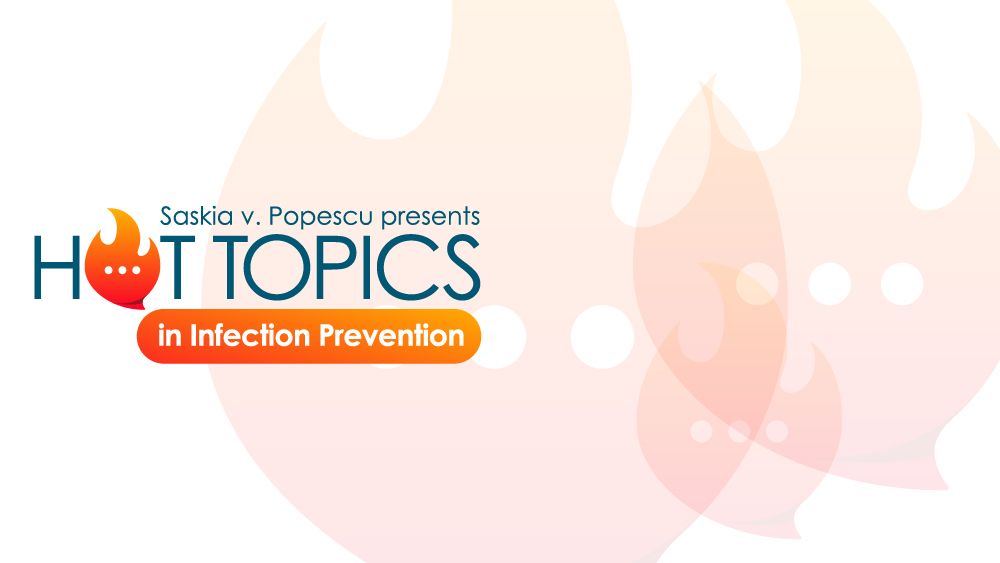Hot Topics in IPC: New Leadership, Tuberculosis, and COVID-19 Updates
In this Hot Topics in IPC, Saskia v. Popescu, PhD, MPH, MA, CIC, gives the latest on COVID-19, tuberculosis, and changes in leadership at the CDC and NIAID.
Saskia v. Papescu, PhD, MPH, MA, CIC, presents Hot Topics in Infection Prevention

From new national health leadership to contaminants and a rise in COVID cases, there’s much to discuss this week.
New Leadership Within CDC and NIAID
One of the most challenging positions is working in public health leadership. Multiply that massively when a health crisis, like a pandemic, occurs. Leadership in the CDC and the National Institute of Allergy and Infectious Disease (NIAID). Learning the lessons of a pandemic and an unprecedented mpox outbreak will inherently change agencies, leadership, and strategy. For the CDC, this translated to new leadership following the departure of Rochelle Walensky, MD, MPH; Mandy Cohen, MD, MPH, is the new director of the CDC. Hailing from the North Carolina Department of Health and Human Services, her experience in public health leadership will be vital during this new phase in US health and pandemic preparedness.
When asked about one of the most significant issues within the U.S. and science, she noted trust – “I think there's really 3 important steps. First is making sure that we are being transparent; we're having clear communications that are simple and accurate that folks can understand. So that's number one - transparency. And the second is making sure that we execute or have good performance in what the CDC is meant to do—and so making sure that we are doing what we say we're going to do. And the third, very important, is about building relationships and partnership. We can't do it alone from the CDC.”
More recently, National Institutes of Health (NIH) announced the replacement of Anthony Fauci, MD, which was no easy feat. Jeanne Marrazzo, MD, has been named the new director of NIAID, which is welcome news given her extensive background in infectious disease leadership, research, and dedication to public health. Dr. Marrazzo is a renowned science communicator, epidemiologist, and public health advocate. “Friends describe Marrazzo as a straight shooter, a kind colleague with a great laugh who loves going out for dinner. She's openly gay, and Jennifer Balkus, PhD, associate professor of epidemiology at the University of Washington, Seattle, says, "Marrazzo is a joyful and fun presence at an annual conference they both attend.” With much gratitude for the previous leadership of these challenging roles, I’m grateful for their dedication and excited to see Cohen and Marrazzo address our continuing public health and scientific challenges.
TB Contamination Related to Bone Grafts
Similar to what we saw in 2021, there is now an outbreak of tuberculosis linked to contaminated bone graft materials. Four cases and one death have already been identified. Back in 2021, Aziyo Biologics supplied the product in 8 spinal surgery cases. The CDC has recently updated its information here—noting: “The product manufacturer sent a voluntary recall notice for this product on July 13, 2023. All patients, facilities, and states involved have been contacted, and all unused units of this product lot have been sequestered, meaning they have been removed from inventory and will not be used. A total of 36 people had surgery or dental procedures using products from this lot. CDC and FDA are working with state and local health departments, hospitals, surgical centers, and dental offices in the affected states to ensure patients are rapidly evaluated and treated, prevent further patient harm, and determine if additional measures can be taken to prevent similar outbreaks in the future.”
COVID-19 Cases Trending Up
With the new EG.5 variant on the rise, some recent cases and hospitalizations are worrisome for many experts. This is our fourth summer with COVID-19, and one thing we know is that summers often see a surge in cases. According to the CDC, in the last week, hospitalizations are up 12.5%, deaths have increased by 10%, and wastewater surveillance is pointing to a rise as well. While these numbers are nowhere near what we’ve seen in the past, the concern is twofold – hospitals will be stressed, which likely reflects the tip of the iceberg, given how limited reporting has been. Esther Choo, MD, MPH, noted, “It remains to be seen what, exactly, [COVID-19] has in store for us this winter. But we’re likely to see some degree of health system oversaturation, struggling hospitals and clinics, reduced access to needed care, and reduced functionality of the whole system. Some of this may feel wearily familiar.”